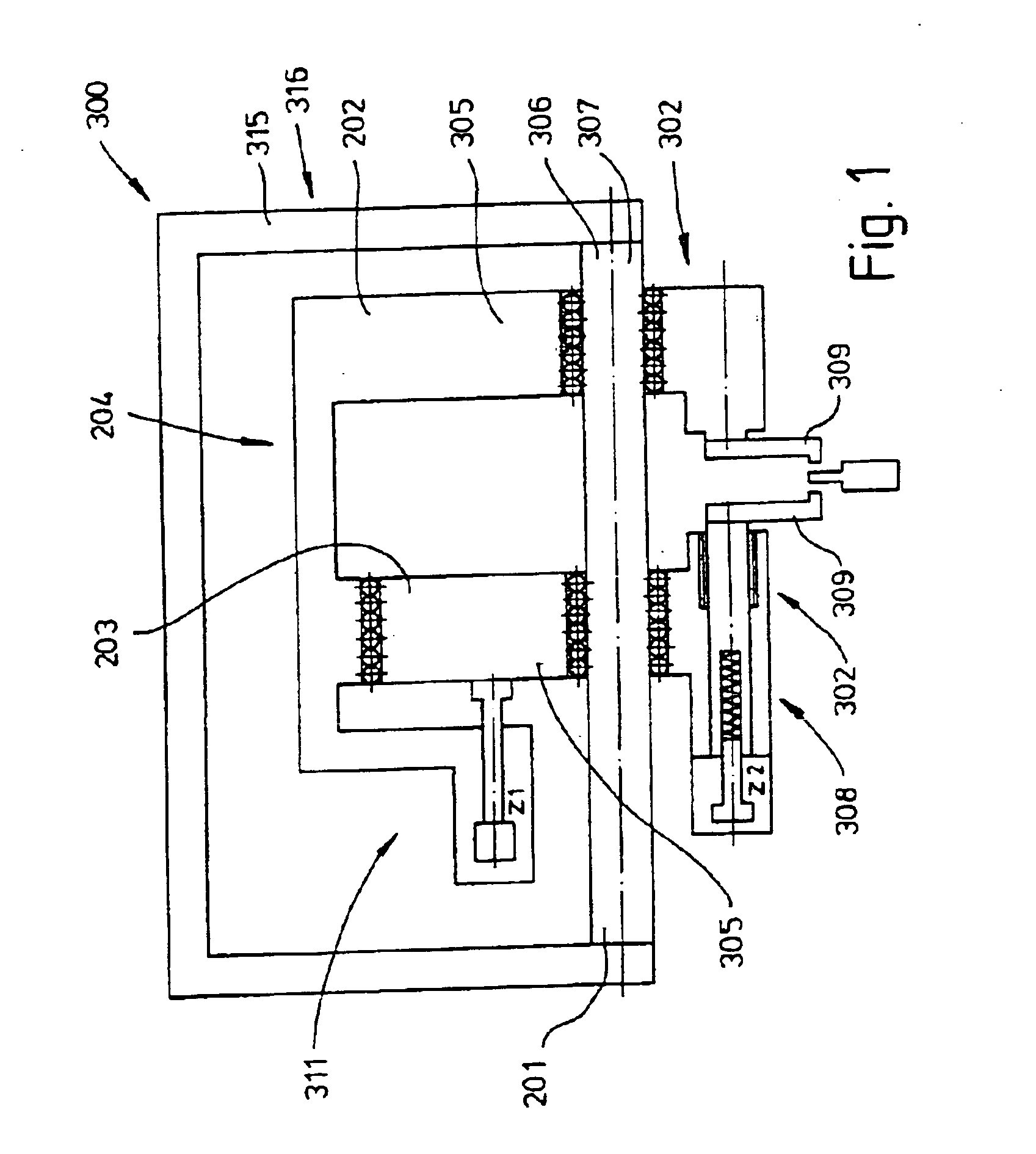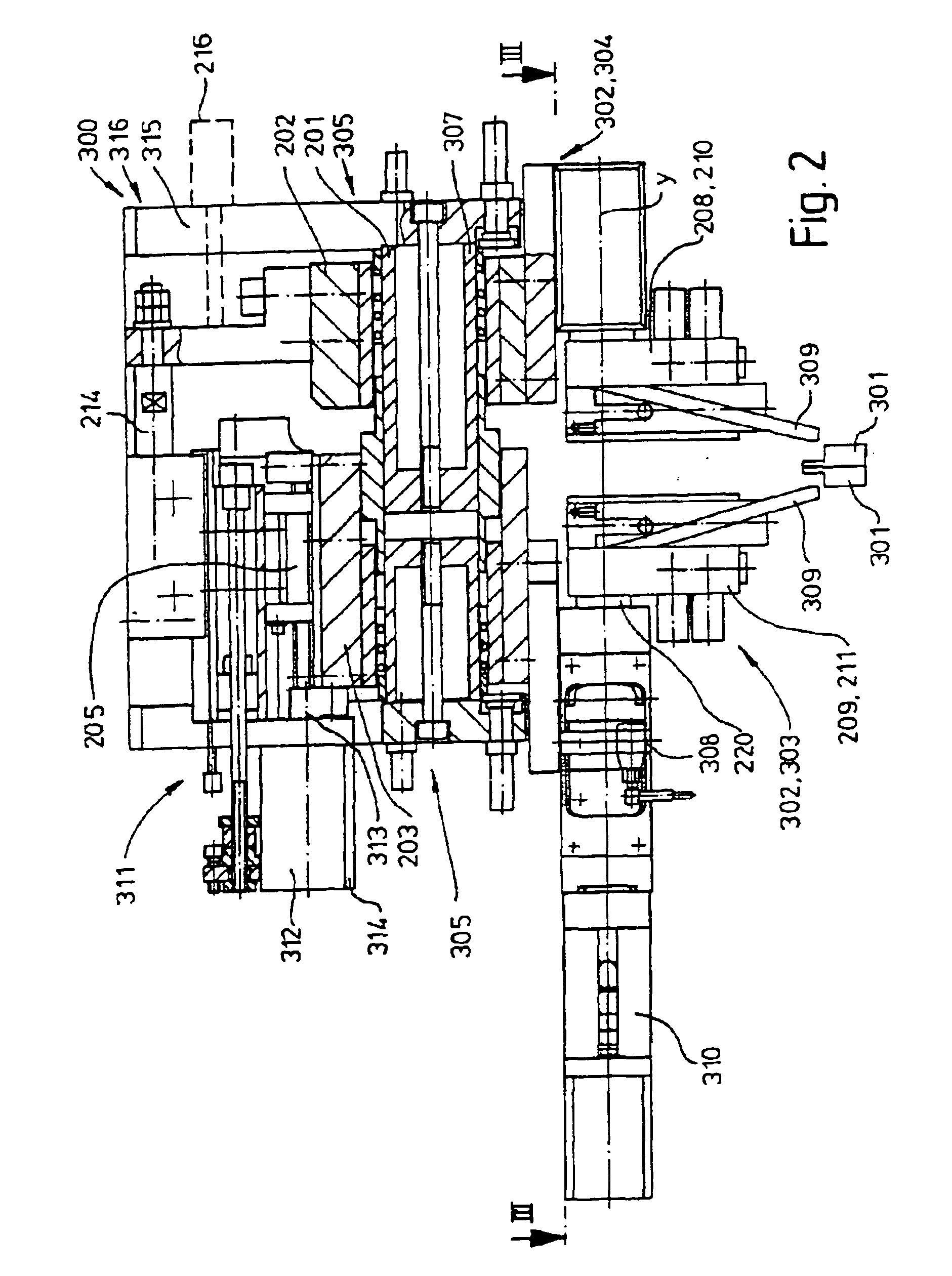Welding head
- Summary
- Abstract
- Description
- Claims
- Application Information
AI Technical Summary
Benefits of technology
Problems solved by technology
Method used
Image
Examples
Embodiment Construction
[0023]A welding head 300 is schematically shown in FIG. 1. The welding head 300 comprises two welding-gun elements 302, which hold electrodes 309, two guide slides 305, a guide means 306, which is designed as a common shaft 307, a drive-cylinder unit 311 with a piston rod 313, a readjusting unit 308 with a force-measuring device 310 (see FIG. 2), and a housing 315. The housing 315 and the shaft 307 form a unit 316 on which the other components mentioned are traversable along the shaft 307. The welding head 300 shown in FIG. 1 is shown in detail in FIGS. 2 and 3. In the schematic FIG. 1. z1 depicts the drive cylinder 312 (see FIG. 2) and z2 depicts the infeed cylinder 221 (see FIG. 3).
[0024]All the dynamic or movable elements of the welding head 300 are mounted in an easily displaceable or floating manner on the shaft 307, which is designed as a transverse shaft 201. The transverse shaft 201 is connected to the housing 315 in a positive-locking manner. The two transverse blocks 202 a...
PUM
| Property | Measurement | Unit |
|---|---|---|
| Force | aaaaa | aaaaa |
Abstract
Description
Claims
Application Information
 Login to View More
Login to View More - R&D
- Intellectual Property
- Life Sciences
- Materials
- Tech Scout
- Unparalleled Data Quality
- Higher Quality Content
- 60% Fewer Hallucinations
Browse by: Latest US Patents, China's latest patents, Technical Efficacy Thesaurus, Application Domain, Technology Topic, Popular Technical Reports.
© 2025 PatSnap. All rights reserved.Legal|Privacy policy|Modern Slavery Act Transparency Statement|Sitemap|About US| Contact US: help@patsnap.com



